
XGS Energy, an advanced-geothermal startup, says it has completed crucial testing that proves its novel technology can operate reliably at commercial scale — without losing a drop of water in the process.
The milestone, announced on Tuesday, will allow Houston-based XGS to begin financing and building its first next-generation geothermal energy project, according to the company. XGS is partnering with Meta and the utility PNM to develop 150 megawatts of around-the-clock clean electricity in New Mexico that will supply the tech giant’s data centers.
“We’re really off to the races now,” said Josh Prueher, the CEO of XGS. The startup is slated to deploy the project’s first 5 MW by around 2027 and bring the remaining megawatts online by 2029, he added.
XGS is part of a fast-growing industry that’s working to harness the world’s abundant geothermal resources to meet soaring electricity demand. Dozens of U.S. companies are developing cutting-edge technologies that promise to access Earth’s heat in drier, deeper, and hotter conditions than is technically or economically feasible for conventional geothermal plants. Another of these firms, Sage Geosystems, is also partnering with Meta to build its own 150-MW geothermal facility somewhere east of the Rocky Mountains.
Today, geothermal energy represents about 0.4% of total U.S. electricity generation, and most facilities are concentrated around geysers and hot springs in Northern California and Nevada.
The next-generation geothermal projects that are currently in development fall into one of three buckets. Enhanced geothermal systems, like the ones that Sage and Fervo Energy are building, involve fracturing rocks and pumping them full of water to create artificial reservoirs far below the earth’s surface. Superhot geothermal, which scientists are studying in Iceland, aims to tap into extreme resources like magma chambers to extract gargantuan amounts of heat.
XGS’s approach falls into the third bucket: closed-loop systems, which entail placing pipes deep underground and sealing them off so that they operate like radiators. As water circulates within the system, it collects heat from the hot rocks below and brings it to the surface, where the heat produces steam that drives electric turbines.
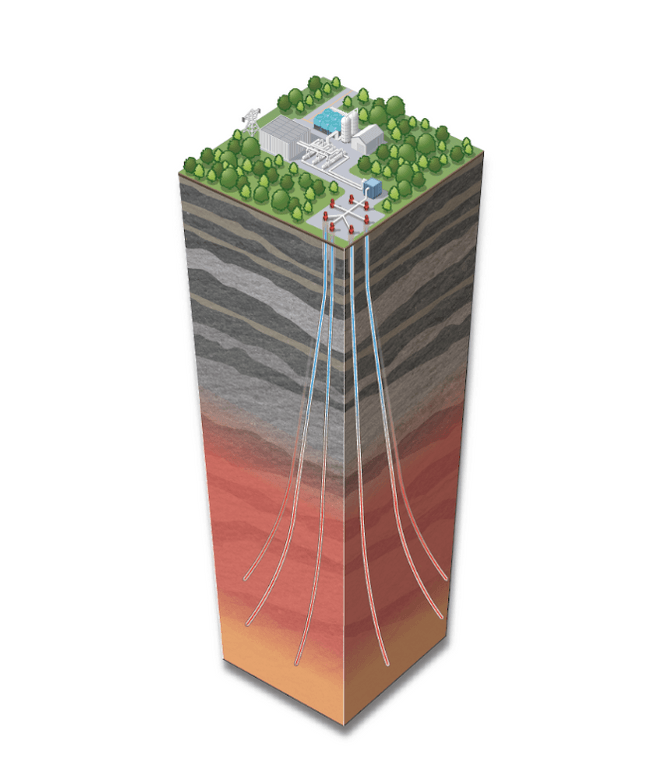
What sets XGS apart from its closed-loop competitors, such as Canadian startup Eavor, is the “thermally conductive” cement alternative that the company places between the hot rock and pipe system. XGS claims its proprietary material, which includes a naturally occurring mineral, can increase the total amount of heat it pulls from the subsurface by 30% to 50%, allowing the company to use simpler and cheaper well designs to access hotter rocks with existing drilling technologies.
XGS completed its first pilot project in late 2024 with a 100-meter-deep well in central Texas. Earlier this year, the startup began operating a full-scale prototype using an idled well at the Coso geothermal field in the Western Mojave Desert region of California. The well runs more than 1,000 meters deep — a standard depth for commercial geothermal wells — and reaches subsurface temperatures of around 200 degrees Celsius (392 degrees Fahrenheit).
For 3,000 hours, or 125 days, XGS continuously ran its closed-loop system while adjusting key variables, such as the rate at which liquid flows and the amount of heat extracted at the surface. The idea was to simulate how the technology performs in different operating conditions, in order to prove it can withstand various types of stress while also demonstrating the company can accurately predict the system’s performance.
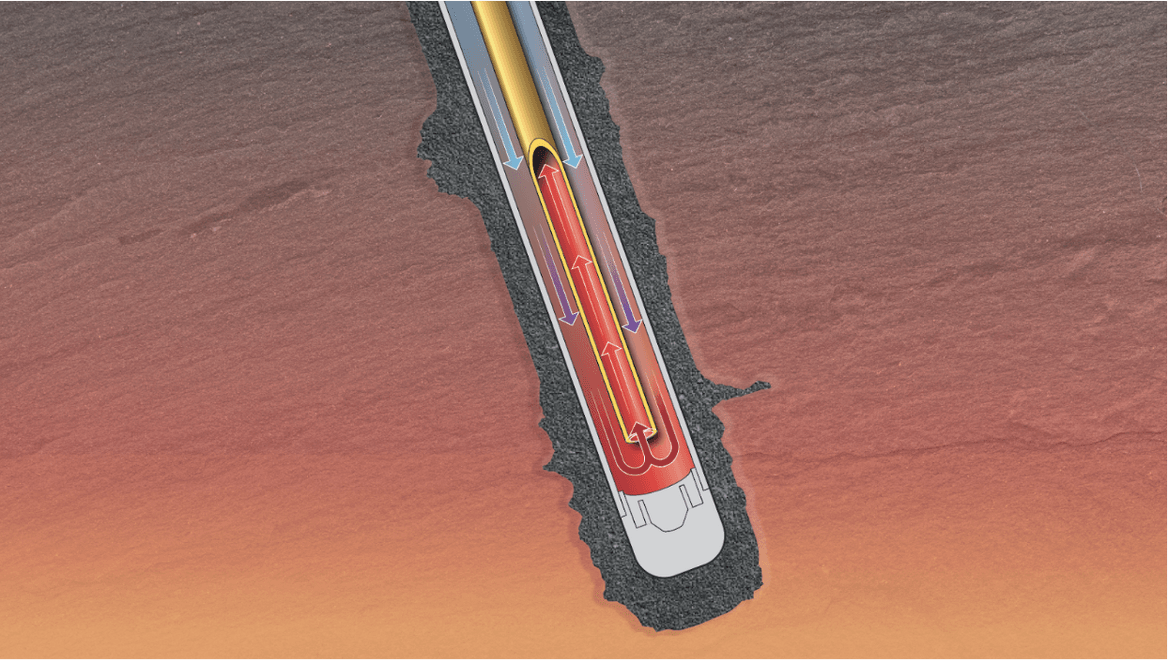
The startup claims the prototype’s actual performance fell within 2% of its predictions, results that XGS later verified with independent engineers, Prueher said. Being able to accurately predict how a project will perform — and for how long — is an essential step for the company to be able to raise the many millions of dollars in debt financing it needs to build its first geothermal power plants, he added.
“This unlocks a huge commercial pipeline that has been accumulating in parallel,” Prueher said of the test results. Along with the 150 MW it’s developing with Meta, the startup has lined up over 3 gigawatts of projects “mostly in the Western United States, where water sensitivity is a huge issue, and where there’s a strong demand signal from data centers and other types of clean energy consumers to build this as quickly as we can.”
XGS has raised $55 million so far from private investors to develop its heat-harvesting technology. One of its biggest backers is VoLo Earth Ventures, which focuses on early-stage climatetech companies.
Joe Goodman, a managing partner for VoLo, said his firm identified XGS “as one of the leading geothermal solutions” about a year and a half ago after reviewing its experimental lab data, and Goodman later joined XGS’s board of directors.
By boosting the system’s overall energy output, XGS’s thermally conductive materials could be the key to making closed-loop geothermal more economically viable, he said, adding that the technology also sidesteps the concerns around water-supply constraints facing enhanced geothermal systems.
“We’re quite optimistic about what we’ve seen,” Goodman said.
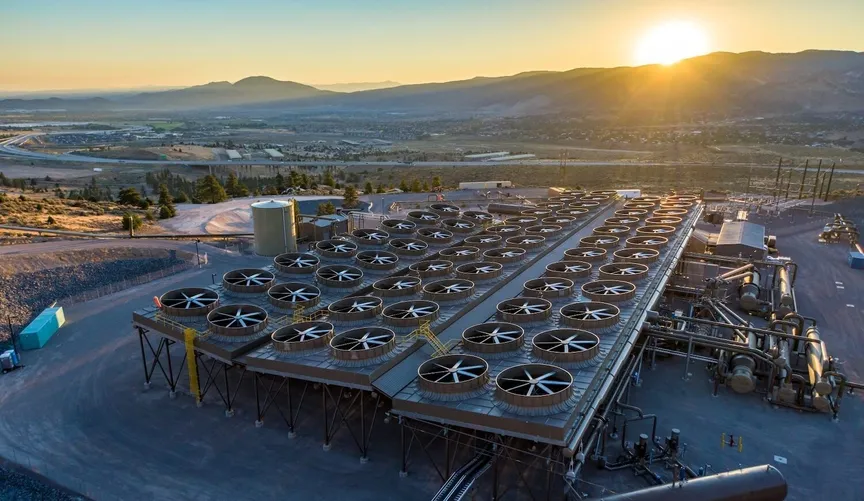
Two of the leading startups working on advanced geothermal energy just struck deals with established industrial giants — moves that will help the companies accelerate their efforts to harness the potentially abundant source of carbon-free energy from underground.
Last week, Fervo Energy said it had picked oilfield services giant Baker Hughes to provide crucial equipment for the startup’s Cape Station geothermal plant in Utah, a selection that brings the 500-megawatt project closer to its 2028 completion goal. Baker Hughes will design and deliver equipment for five power-generating units totaling 300 MW in capacity, which will operate with Fervo’s fracking-based “enhanced geothermal system.”
The news followed an Aug. 28 announcement that startup Sage Geosystems is partnering with Ormat Technologies, a major global developer of conventional geothermal plants. The agreement will enable Sage to deploy its next-generation technology at one of Ormat’s existing sites in Nevada or Utah.
Teaming up with Ormat accelerates Sage’s timeline to build its first commercial power-generation facility by about two years. It’s now targeting to bring the plant online by late 2026 or early 2027, said Cindy Taff, CEO of Sage.
“For us, the ability to scale faster with Ormat is huge,” Taff told Canary Media. “But it’s also a great opportunity for Ormat to reach a deeper [geothermal] resource than what they’re targeting now.”
Geothermal energy represents only about 0.4% of total U.S. electricity generation — largely because existing technology is constrained by geography. Today’s geothermal plants rely on naturally occurring reservoirs of hot water and steam, found only in places like Northern California and Nevada, to spin their turbines and generate power.
Technological advances are making it possible to deploy geothermal in less obvious areas, breathing fresh life into the decades-old industry. In recent years, the carbon-free energy source has seen a surge of investment and bipartisan policy support amid soaring demand for electricity from data centers, factories, and electric vehicles.
Fervo and Sage, both based in Houston, have previously inked deals to supply the tech giants Google and Meta, respectively, with hundreds of megawatts of clean, around-the-clock power for their sprawling U.S. operations.

Next-generation geothermal also benefits from the fact that it shares the same workforce and supply chain as oil and gas companies, an industry now heavily favored in Washington, D.C. The sweeping budget law that President Donald Trump signed in July largely preserves key tax credits for geothermal power plants — despite slashing incentives for wind and solar — and the Trump administration is pushing to fast-track environmental reviews for all types of geothermal projects.
“Geothermal has always enjoyed support from both sides of the aisle,” said Taff, who was previously a vice president at fossil fuel company Shell. “But now there’s a lot of momentum for the industry.”
Sage’s approach to geothermal energy involves tapping into both heat and pressure from hot, dry rocks found deep underground. To start, the company drills wells and fractures rocks to create artificial reservoirs that it pumps full of water. Sage cycles the water in and out of the fracture — like inflating and deflating a balloon — and can jettison the liquid to the surface to drive turbines and produce electricity.
The startup’s partnership with Reno, Nevada-based Ormat will allow Sage to access land and power-plant equipment and to connect to the grid far more quickly than if the startup set up a new site on its own. The companies are looking to install the next-generation system at a facility where Ormat’s older conventional wells are declining in capacity.
“In general, plants may operate below capacity due to a combination of factors, such as changes in the geothermal resource over time,” said Smadar Lavi, Ormat’s vice president and head of investor relations and ESG planning and reporting. “These sites are well-suited for piloting Sage’s technology, as it offers the potential to unlock additional production from existing assets.”
Terra Rogers of the nonprofit Clean Air Task Force said that Ormat’s decision to expand beyond its traditional hydrothermal resources and into next-generation tech represents “an important step, and we’ve all been waiting for it.” Rogers, who leads the advocacy group’s superhot rock geothermal program, called Ormat the “grandparents of geothermal,” given that the company has been around for 60 years and operates more than 190 geothermal plants globally.
As part of the agreement, Ormat can license Sage’s technologies for power generation as well as energy storage. The startup uses a similar setup to store excess grid energy. But instead of drilling deep into high-temperature rocks, Sage pumps water into shallower formations that aren’t as hot, since heat isn’t needed for storage. Pressure builds up underground and can be released later, when power demand spikes, to spin a pinwheel-like Pelton turbine and send electricity back to the grid.
“The idea that [Ormat] chose Sage specifically, with their storage technology, is also very telling for the needs of the grid in the West,” Rogers said, adding that it “complements existing or intermittent forms of renewables” like wind and solar.
Sage recently finished building its first commercial storage project on the site of a coal plant owned by San Miguel Electric Cooperative in Christine, Texas. The facility, which is expected to connect to the Texas grid in December, will be able to discharge 3 MW for four to six hours at a time, according to Taff.

The startup plans to perform a demonstration of its electricity-generating tech in the first quarter of 2026 in Starr County, Texas, in partnership with the U.S. Air Force. Sage is also evaluating potential sites east of the Rocky Mountains to develop its 150-MW project with Meta.
Fervo, meanwhile, continues drilling away at its Cape Station project in Beaver County, Utah, which has been under construction for almost two years.
The eight-year-old company said an initial 100-MW installation is poised to start delivering power to the grid in 2026. An additional 400 MW is slated to come online in 2028, a portion of which will use the new equipment from Baker Hughes. The startup’s recent supply deal comes just months after Fervo said it secured $206 million in new financing for the Cape Station project.
“Fervo designed Cape Station to be a flagship development that’s scalable, repeatable, and a proof point that geothermal is ready to become a major source of reliable, carbon-free power in the U.S.,” Tim Latimer, Fervo’s CEO and cofounder, said in a Sept. 2 statement.
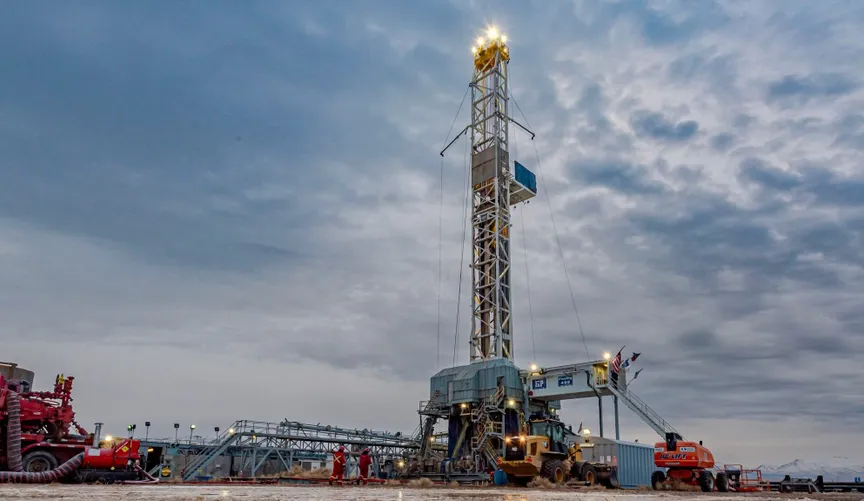
Geothermal energy was spared in President Donald Trump’s sweeping tax and spending law, which made deep cuts to incentives for other forms of clean energy. But developers of the resurgent energy source may still face difficulties ahead due to complex stipulations folded into the new law, among other Trump administration policies.
The “big, beautiful” Republican legislation largely preserves investment and production tax credits for geothermal power plants — as well as battery storage, nuclear, and hydropower projects — established by the Inflation Reduction Act. Incentives for wind and solar, however, are sharply curtailed, and subsidies for residential clean energy projects will abruptly end after this year.
Geothermal advocates celebrated the outcome for their industry, which they say will be vital to scaling the resource in the United States to meet the nation’s soaring power demand. The sector has attracted a lot of attention in recent years because it can provide carbon-free power around the clock — something solar and wind can’t do — and technological advances are making it possible to deploy geothermal in places that conventional plants can’t go.
This “policy milestone highlights the geothermal industry’s role in fortifying grid resilience and national security,” Vanessa Robertson, director of policy and education for Geothermal Rising, an industry association, said in a statement. “With certainty in place, we look forward to seeing projects advance and innovative partnerships flourish.”
Still, the industry isn’t immune to the broader market challenges created by Trump’s policies, despite its more favorable treatment from Congress.
New tariffs on things like steel and aluminum have increased the cost of drilling equipment, heat exchangers, and other key components. A provision in the budget bill aimed at restricting Chinese companies and individuals from accessing tax credits will make it harder for developers to prove compliance, increasing the risk for investors who finance clean energy projects.
“We’re making an ugly layered cake of barriers to quick and clean project development,” said Advait Arun, a senior associate for energy finance at the Center for Public Enterprise, a nonprofit think tank.
Geothermal plants, which harness Earth’s heat to generate power, have for decades represented less than 1% of the U.S. electricity mix. That’s because conventional plants tend to be viable only when located near natural formations like hot springs, where the heat is easier to reach, but which only occur in a handful of places in the United States.
New tools and techniques are emerging that make it possible to put geothermal plants in more parts of the country.
The startup Fervo Energy completed America’s first “enhanced geothermal system” in late 2023 — a 3.5-megawatt pilot plant in Nevada backed by Google. Now, the Houston-based company is building the world’s first large-scale enhanced geothermal plant in Utah’s high desert. Fervo has raised hundreds of millions of dollars in capital to drill dozens of wells for the 500-megawatt Cape Station, with the first 100 MW slated to start delivering power to the grid in 2026.
In June, the startup XGS Energy announced plans to build a 150-MW next-generation geothermal project in New Mexico by 2030 to support Meta’s data center operations. Meta, which owns Facebook and WhatsApp, signed a similar agreement last year with Sage Geosystems to build 150 MW of geothermal power at an unspecified site east of the Rocky Mountains. The first phase of that project is set to come online in 2027.
Geothermal has long drawn bipartisan support and has so far dodged Trump’s broader attacks on renewable energy. It helps that the new geothermal wave has considerable overlap with the oil and gas industry, sharing the same drilling equipment, workforce, and investors. U.S. Energy Secretary Chris Wright, previously the CEO of a fracking company that invested in Fervo, played an active role during budget negotiations to shield geothermal from sweeping cuts to Inflation Reduction Act incentives.
Under the new law, geothermal and other baseload clean power sources can qualify for the full 48E investment tax credit or the 45Y production tax credit if they begin construction by 2033, after which point the credits will gradually decrease to zero in 2036. The concrete phase-out schedule differs from the IRA, which allowed more flexibility and could’ve kept the incentives in place for several more years, according to Geothermal Rising.
Wind and solar facilities, meanwhile, must either start operating before the end of 2027 or begin construction by next summer to obtain credits. Geothermal heat pumps, which heat and cool buildings, will lose access to residential tax credits after 2025.
For next-generation geothermal firms, the tax incentives are crucial to getting the first slate of projects up and running. Developers use the promise of future tax credits as collateral to raise the many millions in financing they need to explore suitable project sites and deploy novel drilling technologies. The credits also help to attract major customers, including tech giants that are looking for a variety of baseload power sources to run their sprawling data centers.
“They help the market to develop,” said Mehdi Yusifov, the director of data centers and AI at Project InnerSpace, a geothermal advocacy group. “Tax credits of this kind can … help get infrastructure built on a mega scale.”
Yusifov and Nico Enriquez, a principal at Future Ventures, studied the potential cost of serving a “hyperscale” data center with power from a 1-gigawatt enhanced geothermal project in a place like the Western U.S. In a new analysis, they found this novel project could achieve a levelized cost of energy of $119 per megawatt-hour without the investment tax credit — significantly better than estimated costs for nuclear power. With the tax credit, the hypothetical geothermal system could achieve $88 per megawatt-hour, which is competitive with the upper range for a fossil-gas power plant.
“It seems like there’s a dam that would break if it could be proven that [geothermal] can produce power anywhere in the range below Three Mile Island,” said Enriquez, referring to the shuttered nuclear plant in Pennsylvania that is expected to restart to serve Microsoft’s growing energy appetite.
“That’s another reason why this investment tax credit is so important, because it makes it possible to have the dam break,” he added. “And suddenly you can flood the market with these projects that are giving us critical infrastructure.”
It’s unclear whether the budget bill will undermine some next-generation projects due to the anti-China provisions attached to these key incentives. The rules, known as “foreign entity of concern” restrictions, will require companies to scrutinize their supply chains to an unprecedented degree, with potentially onerous and costly legal implications that make it harder for projects to claim incentives.
“It remains to be seen how developers of these really innovative technologies can navigate this, because it’s not going to be the easiest process from here on out,” said Arun of the Center for Public Enterprise.
Even as the headwinds swirl, geothermal developers continue to make significant strides to improve their technologies. Both Fervo and the federal Utah Forge initiative have said they’ve dramatically increased drilling speeds and efficiencies in just a handful of years, with Fervo reducing its per-well costs by millions of dollars. For startups, access to tax incentives allows them to get to work to make such advances in the field, Enriquez said.
“There’s an amount we save long-term if we invest upfront in these tax credits, because of the learning curve,” he said. “If we can maintain [the momentum] for the next five years, I think this industry will be one of the key power sources for the U.S.”
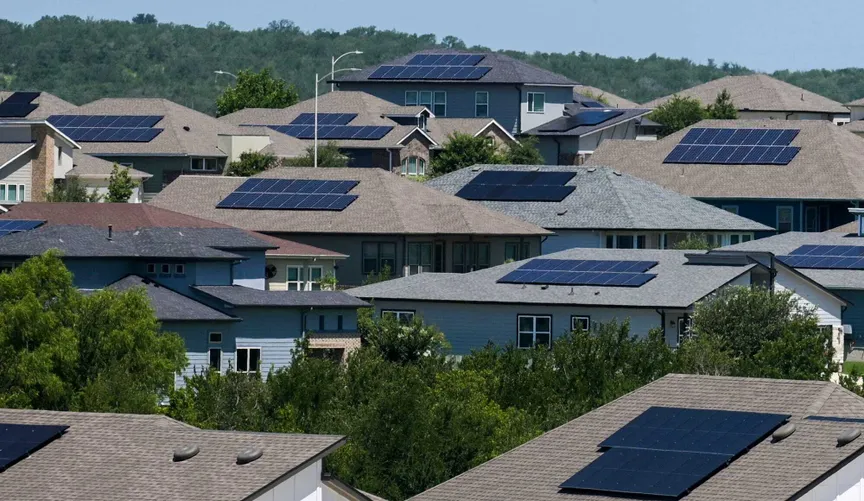
This story was originally co-published by Floodlight and The Texas Tribune.
Whisper Valley is a peek into what the future could look like.
The sweeping community in the Austin, Texas, suburb of Manor is filled with modern homes, small manicured lawns, quiet streets, and rooftops outfitted with solar panels. Hidden beneath it is a network of pipes and man-made reservoirs that heat and cool hundreds of households via geothermal technology — a source that currently provides less than 1% of the U.S. electrical demand.
When completed, Whisper Valley will consist of approximately 7,500 owner-occupied and rental homes and multifamily units ranging in price from $350,000 to $750,000; three schools; 2 million square feet of commercial space; and 700 acres of park and outdoor community spaces. Habitat for Humanity is set to build affordable housing, which will hook up to the geothermal network.
Zac Turov, business development manager for EcoSmart Solutions, which runs the community’s geothermal system, says savings on utility bills for residents here with geothermal-powered heat pumps that cool and heat buildings can run up to $2,000 a year — based on a third-party-verified Home Energy Rating System.
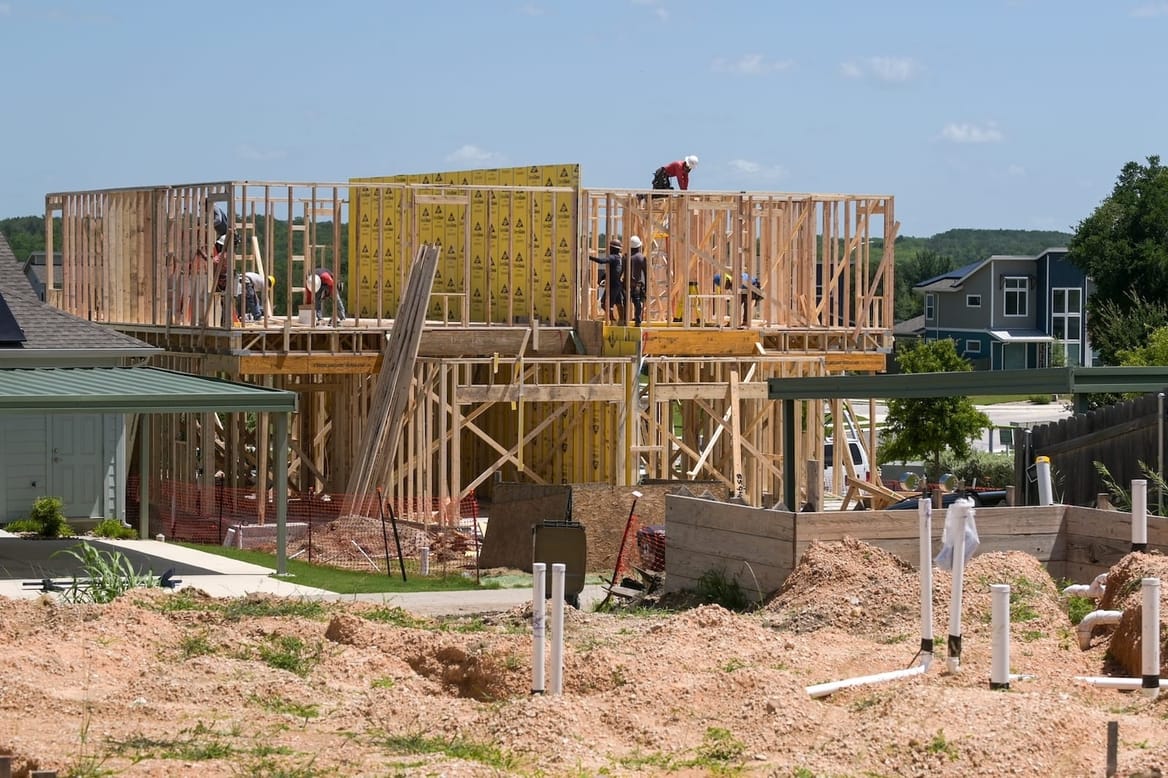
Michael Wilt has lived in the community for six years, moving into his three-bedroom, 1,800-square-foot house during the first phase of Whisper Valley’s development.
He says he’s never had utility costs higher than $70 during the summer months or $45 a month during the winter. That doesn’t count the $60 monthly fee he pays to EcoSmart in operation fees.
“It absolutely works better than the HVAC system I had in the house that I was renting before purchasing the house,” Wilt, 47, said.
“The geothermal system was definitely part of the appeal, but really it was kind of the entire ‘agrihood’ feeling of the whole development,” he added, referring to places that are “intentional” about incorporating green infrastructure into the neighborhood and individual homes.
Developer Michael Thurman has built 30 of the more than 600 homes in this massive mixed-use development. And his company, Thurman Homes, is set to build up to 50 more.
The developer calls geothermal a commonsense way to preserve the planet by cutting the use of fossil fuels to power the homes and businesses here. Heating, cooling, and providing electricity to residential and commercial buildings accounts for about 30% of U.S. greenhouse gas emissions, according to the Environmental Protection Agency.
The community sits 15 miles northeast of Austin. It’s an area home to multiple tech companies, including Google, Tesla, Dell, Samsung, and Applied Materials.
But not all of the developers building in Whisper Valley tap into its geothermal system.
The reason, said Thurman, is money. It costs approximately $40,000 per home to install the heat pumps and hook up to the geothermal network.

“We can’t keep doing the same things,” Thurman said, referring to the imperative to cut greenhouse gas emissions. “This isn’t tough to do, but you have to have core values that make you want to do it.”
Geothermal is more expensive than other forms of renewable energy, including wind and solar, according to new estimates from the consulting firm Lazard.
“The goal is for all the developers who build here to use geothermal,” Turov said. “But it’s still a tough sale.”

Drilling advancements have expanded how and where geothermal technology can be used for heating and cooling individual buildings — and broader power generation.
“The thing is: It is hot everywhere underground,” said Drew Nelson, vice president of programs, policy, and strategy at the Houston-based, geothermal-focused nonprofit Project Innerspace. “Today, with the advances in modern drilling, we are now able to tap into that heat almost anywhere.”
The International Energy Agency (IEA) estimates there is enough next-generation geothermal potential to power the world 140 times over. And Nelson says the United States has the most potential to be a leader in the industry, with countries including China and India also having the resources to generate geothermal power.
“As more projects are implemented, costs will continue to come down,” Nelson said, noting the IEA analysis also predicts geothermal in coming years will be “competitive with solar and wind paired with battery storage.”

Using underground water reservoirs for heating and cooling or to generate electricity isn’t new. But until recently it was mostly confined to specific regions where it was easier to drill into hot water reservoirs — like in Iceland or California.
As of 2021, geothermal was concentrated in Western states, with California and Nevada accounting for more than 90% of the country’s geothermal power production, according to the National Renewable Energy Laboratory.
Geothermal is one of the cleanest ways to produce electricity. And it is the only renewable energy technology that has largely stayed out of the crosshairs of President Donald Trump, who has slashed federal support for renewable and clean energy, including wind and solar.
“One of the reasons President Trump really likes geothermal right now is that it’s all American,” said Bryant Jones, executive director of Geothermal Rising, a California-based nonprofit that advocates for the industry internationally. “It’s local. It’s a way to help rural America figure out their own economies as they transition from one technology to another.”
Geothermal tax credits — for both developers and for homeowners who install heat pumps — helped Whisper Valley thrive in its infancy.
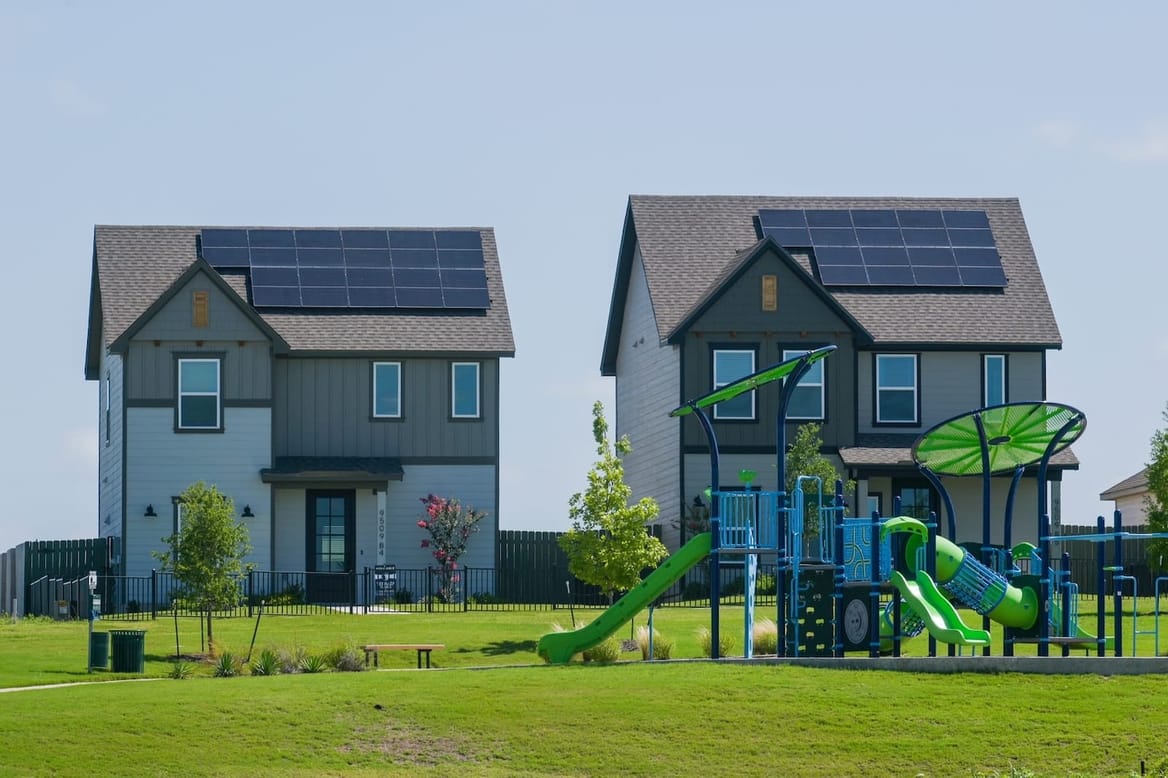
However, industry insiders are ringing the alarms and pressuring the U.S. Congress to not eliminate clean energy tax credits and incentives included in former President Joe Biden’s Inflation Reduction Act. If those tax credits are phased out, insiders say it would cripple the industry before it has a chance to get on its feet.
While billions in federal funding for wind, solar, and other clean energy technology are on the chopping block, the budget bill mulled by Senate Republicans currently would retain tax credits for geothermal, nuclear, and hydropower projects that begin construction by 2033.
The U.S. Department of Energy did not respond to multiple requests for comment on whether it would continue to support geothermal through federal funding and tax incentives, as it did under the previous administration.
“We do need the tax credits for geothermal energy to be maintained,” Jones said. “Geothermal doesn’t have a technology problem, it has a policy problem. [It’s] been around for over 100 years, [but] it hasn’t had the policy support the way the oil and gas industry has, or the nuclear industry, and most recently, the solar and wind industry.”

Traditionally, geothermal was limited to places with naturally occurring underground hot reservoirs, usually near tectonic plates or in volcanic areas.
But evolutions in geothermal have opened the door for developers to utilize oil and gas drilling technologies which help lower costs and allow them to create their own reservoirs almost anywhere. The models fall in two categories: enhanced geothermal systems, or EGS, and closed-loop geothermal systems like the one in Whisper Valley.
With EGS systems, developers create artificial underground reservoirs through hydraulic fracturing or “fracking,” and then inject water or other fluids into a well. The water is heated as it moves through hot rocks and is then pumped up into a separate production well to generate energy.
Closed-loop systems use an underground network of sealed wells where water or fluid is pumped and heated without ever coming in direct contact with rocks. It is then piped into the homes and buildings connected to the system. These systems also cool buildings by drawing out heat during warm weather.
“The more that people learn about geothermal,” Jones said, “the more obsessed they become.”
He says geothermal’s appeal includes a low carbon footprint, reliability, and established drilling technology pioneered by the oil and gas industry. Unlike batteries and wind power, geothermal does not rely on critical minerals whose supply can be disrupted by geopolitical events.
It’s also among the more expensive energy sources because it requires specialized drilling, installation equipment, and skilled workers trained to build it all. Supporters say the industry will continue to need federal tax credits and funding to grow, especially in communities where utility bills are already unaffordable.
While many geothermal units serve just a single household, systems that serve many buildings are more affordable.
“A way to address that is through thermal energy networks, or geothermal district networks,” Jones said, referring to connecting multiple homes and buildings, which means “the cost goes down for everybody.“
He cites Framingham, Massachusetts, where one utility, Eversource, is providing geothermal energy for roughly 140 residential and commercial customers in one neighborhood. After the two-year pilot project ends, customers can return to natural gas, also known as methane, or continue using geothermal, the company says.
“We are still collecting data as we enter the start of the cooling season, but over the winter we saw strong system performance even during the January and February cold snaps,” said Olessa Stepanova, spokesperson for Eversource.
Stepanova says the company expects to have insight into energy savings from the project within a year from when each customer is connected to the geothermal system. And the utility is in final negotiations with the DOE and state to expand the network.
“This would not only demonstrate the scalability of networked geothermal systems,” she added, “but also how they become more cost-effective as they are expanded.”

Last year, the U.S. Department of Energy Geothermal Technologies Office awarded a total of $37.7 million to five cities to install district-scale geothermal heating and cooling systems.
Ann Arbor, Michigan, was awarded the most money, $10 million, which the city is using to build and operate a community geothermal system. It is projected to provide heating and cooling to 262 homes, a local elementary school, and community center in the Bryant neighborhood. The predominantly minority, lower-income area seeks to become the most sustainable neighborhood in the United States.
“It’s a neighborhood that has been disinvested in, and as we were working on our climate goals to be carbon neutral, we wanted to do that in a just and equitable way,” said Missy Stults, director of the city’s Office of Sustainability and Innovations.
Stults says some households in the community shell out up to 30% of their income on utility bills.
“We started to think about what’s a sustainable source of heating that we could look at that helps maintain affordability for everyone [and] that’s clean,” Stults said. “And so geothermal was one thing that came up, and the residents were really interested in it.”
Stults says it’ll likely be a year before the city starts drilling — and that’s only if Congress or the Trump administration keeps the federal funding in place. The city has been “sort of treading water” since Trump announced freezes on various renewable energy program spending. As of June, Stults says the grant had not been terminated, but the funding still hadn’t been allocated to move their project forward.
“Our hope is that [the project] will align with the administration’s goals,” she said. “This is American-made energy. It’s our grounds, our soil. It’s pretty powerful.”

As a selling point, Thurman uses the utility bills for his model home in Whisper Valley and compares them with other homes of the same size he built with traditional HVAC systems.
For the three-bedroom,1,800-square-foot home he built in Whisper Valley, utility bills in June and August 2023 were $42.16 and $74.54, respectively. A home the same size he built using an HVAC system had bills in those same two months of $233 and $326, respectively.
Turov says some developers have opted to build homes in Whisper Valley that use traditional HVAC systems instead of geothermal.

“Developers are reluctant to innovate, usually because it costs more, even though there are great benefits from using the technology,” he said. “We might have to make it work without [federal] subsidies, which will be a challenge but could be good for the long-term viability of the technology in the United States.”
EcoSmart Solutions successfully lobbied Texas state lawmakers for changes in state law and initiatives that can help geothermal grow there — with or without federal subsidies. They include measures that cut drilling regulations for geothermal projects, allow such systems to be added to the electric grid and pave the way for financing through bonds and “special purpose” taxing districts.
Turov explains that such districts allow developers to install infrastructure such as lights, roads, and water systems, the cost of which is then repaid by owners on their property tax bills.
“I think right now, we’re in the first adopter stage,” Turov said. “And that’ll probably still be the case for the next few years. And then I think more and more people will adopt it.”
Floodlight is a nonprofit newsroom that investigates the powers stalling climate action. The Texas Tribune is a nonprofit, nonpartisan media organization that informs Texans — and engages with them — about public policy, politics, government, and statewide issues.
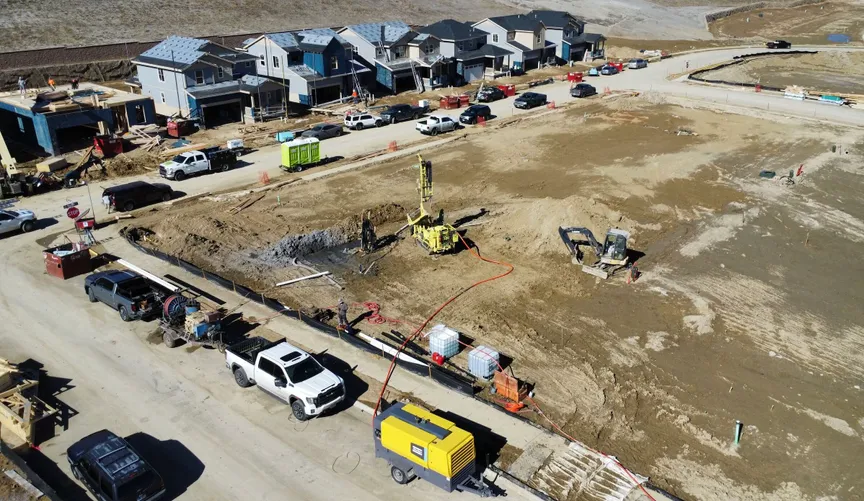
Ground-source heat pumps, which tap into the stable temperatures found hundreds of feet beneath the Earth’s surface, are a super-efficient way to heat and cool homes. They’re also quite expensive to install in existing houses.
There’s a pretty straightforward reason: It’s hard to drill in a residential neighborhood. Hiring contractors to fit rigs into tight single-family yards and drill boreholes in places where utility infrastructure crisscrosses underfoot is a lot more complicated and expensive than installing an air-source heat pump, fossil-gas furnace, or other standard, aboveground HVAC systems.
But what if you could bore hundreds of holes at a time across a patch of cleared land and then build heat pump–equipped houses on top of them? That should be a lot cheaper. In fact, it could make ground-source heat pumps about as cheap as traditional HVAC offerings in newly built homes.
On Wednesday, Google X spinout Dandelion Energy and major U.S. homebuilder Lennar unveiled a partnership that aims to prove that proposition. The companies have pledged to build ground-source geothermal into more than 1,500 new homes in Colorado over the next two years, starting with Lennar’s Ken-Caryl Ranch development in Littleton, Colorado.
The goal is simple, Kathy Hannun, Dandelion’s founder and president, told Canary Media: “Can you get the up-front cost to be lower than everything else? Because then you have no reason not to do it.”
Just being able to tackle hundreds of boreholes at a time should more than halve the drilling costs that burden existing home retrofits, she said. Large-project economies of scale and designing homes around the high-efficiency heating and cooling that Dandelion’s system provides will yield further cost reductions, she said.
And by eliminating the need for new gas pipelines and reducing the peak electricity demands on the power grid, subdivisions built on this model could save a bundle on utilities as well, she said. That’s a key benefit cited in a January report from the Department of Energy, which found that widespread adoption of ground-source heat pumps, also known as geothermal heat pumps, could cut hundreds of gigawatts of peak demand and tens of billions of dollars in grid costs over the coming decades.
That study also found ground-source heat pumps could make a big dent in residential energy consumption and carbon emissions, particularly in climates where they outperform air-source heat pumps during cold winter weather.
But as it stands, the technology is in no more than 1% of U.S. homes, the report found. For comparison, air-source heat pumps are now in about 13% of U.S. homes.
The chief barrier, once again, is the up-front expense. Dandelion has spent the past eight years working to bring down those costs through a combination of technology and business-model innovation, and has done more than 1,000 home retrofits in the U.S. Northeast, targeting homes with high heating costs, many of which use expensive fuel oil.
To break into larger volume deployments, Dandelion has shifted its focus to new construction over the past two years or so, Hannun said. That pivot has naturally included Lennar, an investor in Dandelion that now owns about 10% of the startup, she said.
Lennar and Dandelion aren’t disclosing cost data for the homes they’re collaborating on in Colorado. But, Hannun said, “in a few markets, the up-front cost of geothermal today is less than conventional” heating.
That’s certainly the case in Colorado, where Gov. Jared Polis, a Democrat, has made geothermal energy, or “the heat beneath our feet,” as he’s dubbed it in various state and regional policy initiatives, a big part of the state’s broader decarbonization strategy.
Over the past few years, the state has passed legislation creating tax credits for heat pumps, including ground-source systems, and competitive grants for geothermal energy projects. It also passed a law in 2021 that spurred Xcel Energy, the state’s largest utility, to launch a Clean Heat Plan that will provide significant rebates to projects that improve energy efficiency and help customers switch from gas to electric heating.
“The rebates coming out of Xcel’s Clean Heat Plan played a really significant role in the ability of the Dandelion-Lennar investments to pan out,” said Will Toor, executive director of the Colorado Energy Office, which manages state energy programs.
The government and utility incentives will also lower costs for people who aren’t buying these homes, because geothermal heat pump systems reduce the need for other utility infrastructure, he noted.
All-electric homes don’t need new gas pipeline extensions, the costs of which are typically recovered through increases on the bills of utility customers at large. And ground-source heat pumps need much less electricity than air-source heat pumps to keep homes warm during the coldest hours of the year, since they’re able to pull heat from deep underground thermal reservoirs rather than from cold outdoor air.
“There’s clearly some cost of putting in a geothermal system. But once it’s in there, it’s such an inexpensive approach to heating buildings,” Toor said. “If we can come up with creative ways to get these systems installed, we think it will help homeowners and businesses save money on their energy bills over the years.”
Power grids are sized to meet maximum electricity demand, so buildings that can reliably keep electricity use below certain limits minimize the need to build more grid infrastructure. These factors can make geothermal networks the least expensive option on a system-wide basis when the lifecycle costs of infrastructure and energy consumption are built in.
Xcel Energy is looking for ways to mitigate growing grid costs as it seeks regulatory approval to spend nearly $5 billion on its low-voltage distribution grid over the next five years, much of it to support growing power demand from heat pumps and electric vehicles.
“Based on our own research and forecasting, homes heated with ground-source heat pumps may require less electricity at peak and overall compared to homes with an air-source heat pump or resistance heating, therefore requiring fewer infrastructure investments on the grid,” Xcel spokesperson Tyler Bryant told Canary Media in an email. Xcel will study the grid impacts of Lennar and Dandelion Energy’s use of ground-source heat pumps to “inform future projects from a grid planning perspective.”
Hannun isn’t aware of other homebuilders embedding ground-source heat pumps into large-scale single-family construction, though they are being built into bigger buildings, including multifamily housing.
But there are similar, yet distinct, approaches for single-family homes to tap underground temperature reserves to save energy and cut carbon emissions.
One is thermal energy networks — projects that build the infrastructure needed for geothermal heat pumps at a campus-wide or neighborhood scale instead of serving just one home. Utilities in Massachusetts and New York are actively pursuing these projects as part of their states’ decarbonization strategies. Six other states, including California and Colorado, have passed legislation that allows or mandates gas utilities to develop demonstration projects or pilots, according to the Building Decarbonization Coalition.
“Geothermal heat pumps and thermal energy networks are a cost-effective way for utilities and developers to deliver clean, affordable heating and cooling, at scale, while minimizing strain on the electric grid,” said Ania Camargo, the nonprofit’s associate director of thermal networks. “The more geothermal systems we install, the better for the homeowner and the grid in the long run.”
Newly built neighborhoods can also incorporate thermal energy networks. A shared geothermal system will serve the 7,500-home Whisper Valley development in Austin, Texas. In Colorado, the housing authority serving Steamboat Springs is studying a community geothermal system for a new housing development.
Under a state law passed last year, Xcel Energy is examining several “neighborhood-scale alternatives to the gas system that can include both electrification and thermal energy network or ground-source heat pumps,” Toor said.
Hannun agreed that shared thermal energy networks are an effective way to approach neighborhood-scale geothermal heating. But they’re also more complicated to build and administer than individual ground-source heat pumps, particularly for entities that aren’t a regulated utility with state-mandated authority to provide energy services to customers. Lennar and Dandelion opted for single-home ground loops to avoid any complications that could arise from getting lots of homeowners to commit to a shared system, she said.
Not all homebuilders will embrace the additional costs of ground-source geothermal, she said. Developers don’t pay utility bills, incentivizing them to choose the lowest-cost heating and cooling options available. At the same time, nationwide homebuilders like Lennar “often offer new products to homeowners to try to stand out,” Hannun said, and ground-source heating has “traditionally been a luxury system.”
It’s also a straightforward way to meet state or local energy-efficiency building codes, she added.
Air-source heat pumps are inherently more energy efficient than fossil-fueled furnaces, since they use energy to move heat from one place to another rather than to create heat directly. But ground-source heat pumps can be more than twice as efficient as air-source models.
“These homes will have the lowest operating cost for HVAC possible,” Hannun said. “The homeowners will spend less than if they were using air-source heat pumps or if they were using gas. And that will be locked in for the lifetime of that home because that ground loop is built to last.”
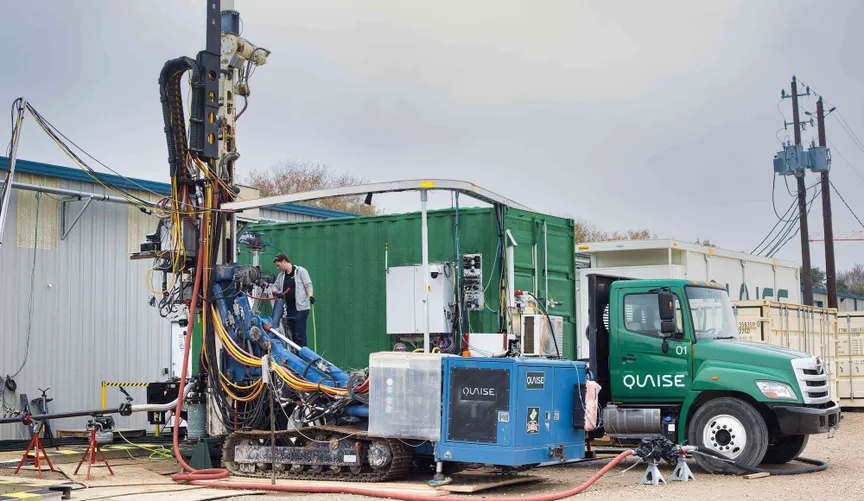
One recent day in a warehouse south of downtown Houston, I got a peek at something that just might revolutionize the clean energy transition: a molten orange puddle of instantly liquefied rock.
Moments before, an attendant loaded a slug of basalt under a metal-frame structure that looked like something a supervillain might point at a tied-up James Bond, and I was ushered behind a protective barrier. An order went out, the contraption began to whir, and we turned our focus to a TV screen, where the solid rock erupted in a blast of white light that overwhelmed the livestream camera.
One mustn’t believe everything that appears on a screen, but then Carlos Araque, CEO and co-founder of advanced geothermal startup Quaise Energy, led us back to the rig, and there was the freshly blasted rock. A minute ago, it hit as much as 2,000 degrees Celsius, but the molten goop had already solidified into a crown of shiny obsidian. Heat radiated from it, warming my hand as I hovered it a few inches away. The air smelled like toasted marshmallows, if the marshmallows were made of stone.
The flashy demonstration was just one example of how startups are looking to revolutionize geothermal energy production. The U.S. built its biggest geothermal power-plant complex in 1960, but construction has stagnated for decades. Geothermal serves a mere 0.4% of U.S. electricity generation; its nearly 4 gigawatts of capacity amounts to roughly the solar and battery capacity Texas installs in four months these days.
The way out of this decades-long malaise may simply be down. The more subterranean heat a geothermal plant can access, the more energy it can generate, and the Earth gets hotter closer to the core. But the intense conditions below a few miles deep rapidly wreck conventional drill bits.
Araque figured that if he could build a strong enough drill bit, it could harness this super-deep heat and deliver cheap, clean, and abundant geothermal power, pretty much anywhere.
So he left a career in oilfield drilling and formed Quaise in 2018 to do exactly that. Or, more precisely, the company adapted the gyrotron, a tool honed by the nuclear fusion industry that emits millimeter waves, which fall on the electromagnetic spectrum between microwaves and infrared waves. Fusion researchers use them to heat plasma to unfathomably high temperatures. But these waves exert a dramatic effect on rock, so Quaise leadership repurposed them to bore through depths that would demolish conventional drill bits, and perhaps unlock a new golden age of geothermal.
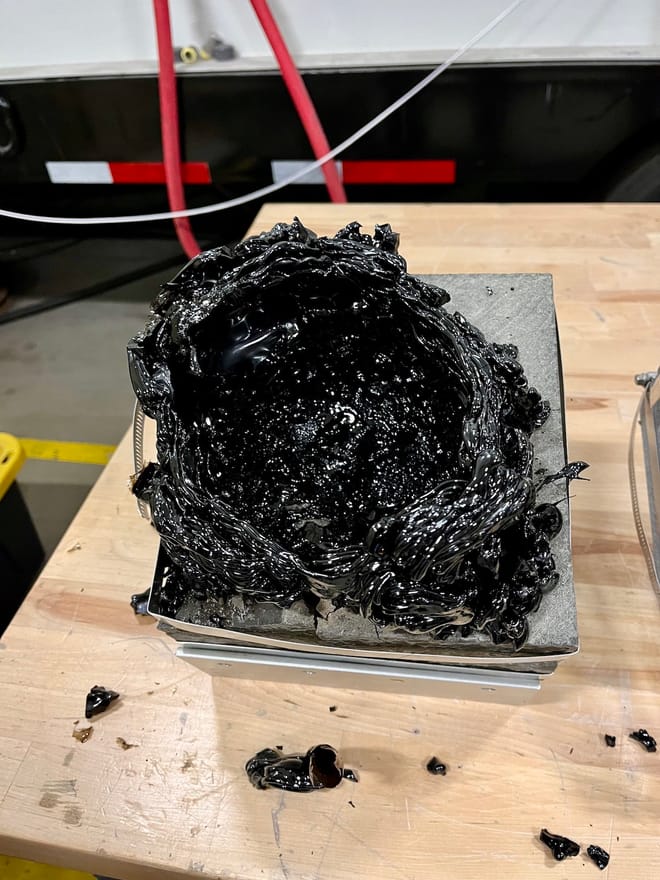
Araque likened the technology to the familiar microwave oven, which heats food by zapping it with a particular band of electromagnetic waves that excites water molecules.
“Translate that into rock,” he said. “Well, rocks love millimeter waves. You put millimeter waves into rock, they soak it up, they light up instantly.”
He first pitched me on his super-powered drill bit six years ago. At the time, it all sounded like science fiction, something that Massachusetts Institute of Technology researchers might study and venture capitalists might take a flyer on but that wouldn’t materialize as real technology.
In fact, Quaise did spin out of an MIT lab, and it did raise venture capital for the idea — more than $100 million to date from Prelude Ventures, Mitsubishi, and others. Seven years into the project, however, here I was, smelling the deep, toasty scent of freshly bruleed rock. Deep geothermal energy suddenly seemed a little less like sci-fi and a little more plausible.
Still, Quaise has plenty more work to do before it can deliver its transformative promise — and that starts with getting out of the lab and into the field.
By the time I visited in late January, Quaise had been melting rock outside of the lab but on its own property for weeks. I personally witnessed rock-melting in two places: in the hangar, with a drill rig pointing the millimeter-wave beam at a target rock, and in the yard, where a contraption mounted on tank treads blasted into a rock sample placed in a concrete receptacle on the ground.
“This is the first demonstration of capability, outside, at full scale,” Araque said of the installation.
These tests are necessary to calibrate the novel combination of millimeter-wave emitter and conventional oil-drilling rig. (The Quaise founders know their way around that world, having come from drilling powerhouse Schlumberger.) Quaise proved it can transmit the waves while moving the device, something that the nuclear fusion folks never needed to test. The company’s “articulated wave guide” also showed it can achieve a consistent round shape for its borehole, at least over short distances.

The tests so far amount to the karate demonstration where someone chops through a stack of two-by-fours: Most impressive but not a commercially viable way to chop wood. The next step is obvious — Quaise needs to get out and drill into the earth. That’s coming soon.
Quaise obtained a test site in north Houston where it can drill up to 100 feet underground. The 100-kilowatt gyrotron system I saw firing up in the warehouse has already been moved to this field site, where Quaise is connecting it to a full-scale drilling rig owned by partner Nabors Industries; its mast will soar over 182 feet tall. Drilling should begin in April, cutting into an existing well stuffed with rock samples — outdoors but still a controlled environment.
Soon after, Quaise will swap that out for a new 1-megawatt system, delivering 10 times the power to speed up subsurface boring and maintain an 8-inch-diameter hole, bigger than the initial test holes. That device will use a comparable amount of power as is used by conventional drilling rigs, Araque noted.
Drilling 100 feet down is a start but far from sufficient. The company also secured a quarry site near Austin that provides the opportunity to drill nearly 500 feet through pure granite. Once the technology graduates to drilling thousands of feet, Quaise plans to piggyback on the existing drilling industry with its “BYOG” approach.
“Bring a gyrotron, bring the waveguide, bring the power supply, plug it into the drilling rig,” Araque said. “There’s thousands of drilling rigs in the world. You just go and plug and play into them.”
If and when the time comes to drill for actual power plants, Quaise aims to ride conventional drilling technologies as far as they’ll go. The plan is to hire traditional rigs to burrow through the first 2 to 3 kilometers of subsurface (up to nearly 2 miles) until the drill hits what’s known as basement rock.
After hitting basement rock, Quaise will swap drill bits for its millimeter-wave drill and blast to about 5 miles deep in favorable locations — even that far down, some places have easier access to heat than others. Operators will pump nitrogen gas into the hole to flush out the dust from vaporized rock as the drill moves ever deeper.
Quaise leaders did not disclose a timeline for the company’s first commercial deep drilling. At that point, Quaise will need to build an actual power plant and navigate the myriad permitting and transmission-connection hurdles that face renewables developers broadly. The company is running this development process in-house and already has multiple geothermal leases secured, a spokesperson noted.
In the meantime, a handful of other startups are making headway on commercial-scale geothermal plants, albeit with different approaches.
Fervo Energy has applied fracking technologies to geothermal drilling to make the process more efficient; after a successful 3.5-megawatt trial project in Nevada, the company began drilling the 400-megawatt Cape Station plant in Utah.
Closer in principle to Quaise, a Canadian startup called Eavor is developing ways to drill deeper than was economically practical before. Instead of reinventing the drill itself, Eavor defends it with insulation and “shock cooling” to avoid crumbling in deep, high-temperature rock.
“Most oil and gas directional drilling tools are rated for 180C temperatures, [but Eavor’s] insulated drilling pipe has a cooling effect on the tools making them work at even higher temperatures just by insulating the pipe,” a company spokesperson said in an email.
Eavor notched a big win in 2023, when it drilled a test well in New Mexico to depths of 3.4 miles and through rock as hot as 250 degrees Celsius. Now it’s drilling a closed-loop project in Germany to generate 8.2 megawatts of electricity and 64 megawatts of heating.
Taken together, geothermal innovators like Quaise, along with the somewhat less science-fictiony enhanced geothermal startups like Fervo and Eavor, could produce the “clean firm” power that energy modelers say is necessary to balance out cheap wind and solar in the quest to decarbonize the electrical grid.
“Advanced geothermal technologies could unlock a terawatt-scale resource that can deliver clean energy on demand,” said Jesse Jenkins, an authority on net-zero modeling and assistant professor at Princeton University. “That would be an enormously valuable tool to have in our toolbox.”
Quaise could in theory supply those other geothermal innovators with a better type of drill to extend their range. But Araque insisted Quaise wants to be in the power generation business, not the widget business.
The company also has to manage an evident chokepoint in its development: those highly specialized gyrotrons. Quaise owns four, Araque said; the global gyrotron supply chain currently can’t handle an order for 10 more. That’s not an issue while Quaise works its way up to deep subsurface drilling, but the growth trajectory of the gyrotron suppliers could limit how much power-plant drilling the company can perform simultaneously in the future.
The work to extend from boring a few inches of rock to miles of it should not be underestimated, but Quaise has already crossed the more daunting chasm from never melting rock with an energy beam to doing so daily.
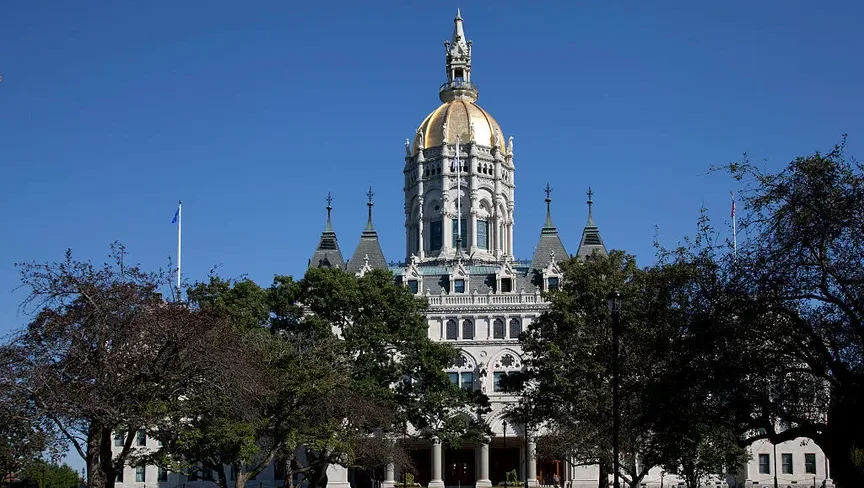
Connecticut could become the latest state to pursue networked geothermal systems as a way of cutting greenhouse gas emissions, improving public health, and reducing energy cost burdens for residents.
State lawmakers are considering a bill, HB 6929, that would create a grant and loan program to support development of geothermal networks, which tap into energy stored in the earth to deliver heating and cooling to multiple buildings in one neighborhood.
“Thermal energy networks are an incredibly exciting technological breakthrough,” said Samantha Dynowski, state director of the Sierra Club’s Connecticut chapter, testifying in favor of the bill during a Tuesday hearing before the Legislature’s Joint Committee on Energy and Technology.
The bill enjoys wide support from environmental advocates, community leaders, and business interests. Several parties are pushing for changes they say would make even more of an impact, such as requiring utilities to propose pilot projects, following the example of New York, which included such a mandate in a 2022 law.
Also, as drafted, the bill does not specify a funding mechanism for the grant and loan program it would create. Several stakeholders have suggested adding language that authorizes the state to issue a bond to fund the program.
“It’s a one-time capital investment that would yield long-term environmental and economic benefits,” said Connor Yakaitis, deputy director of the Connecticut League of Conservation Voters, who also suggested a budget of $20 million for the program.
Advocates point to the emissions reductions the systems can achieve. More than 40% of the state’s households burn heating oil to stay warm, and another 37% use natural gas; meanwhile, the only emissions associated with geothermal heat come from generating the electricity used to run the heat pumps installed in buildings across the system.
Geothermal networks can also save customers money because the energy underground is free and ground-source heat pumps use far less electricity than air-source heat pumps or electric resistance heat. In Framingham, Massachusetts, the country’s first utility-scale geothermal network is projected to cut some customers’ heating bills by as much as 75% this winter, testified Eric Bosworth, clean technologies manager for Eversource, which built and owns the project.
The adoption of geothermal networks can also help utilities — and their workers — transfer skills into a new field as energy systems transition away from natural gas, supporters said.
“They have experience and expertise that can be leveraged,” Bosworth said, noting that gas industry workers constructed much of the Framingham system.
Geothermal heat pumps have been around for more than 100 years, but the idea of using the equipment to serve dozens of homes connected in a loop first started to catch on in 2017, when Massachusetts energy transition nonprofit HEET began pitching it to utilities. They were interested, and in June 2024, Eversource brought the Framingham system online. Today the network serves 135 residential and commercial customers in the city of Framingham. National Grid is also in the process of developing a system in Boston.
Other states have seen the promise in geothermal networks, too. Six states in addition to New York and Massachusetts have passed legislation supporting utility construction of thermal energy networks, according to the Building Decarbonization Coalition, and some 22 to 27 pilot projects have been proposed to regulators nationwide.
In Connecticut, environmental groups have been discussing the geothermal possibilities with utilities for a few years, said Shannon Laun, the Conservation Law Foundation’s vice president for Connecticut. Eversource has shown interest in developing a pilot project and taken preliminary steps to seek approval to proceed, but specific legislation supporting geothermal networks would be more likely to galvanize action from utilities, she said.
“We’re starting to see some new momentum with this bill,” Laun said.

The recent cancellation of a Massachusetts networked geothermal project isn’t dampening enthusiasm for the emerging clean-heat strategy.
National Grid said this month it has abandoned a planned geothermal system in Lowell, Massachusetts, due to higher-than-expected costs. The news disappointed advocates who see networked geothermal as an important tool for transitioning from natural gas heat, but they pointed to many more reasons for optimism about the concept’s momentum.
The nation’s first utility-operated neighborhood geothermal network, a loop serving 36 buildings in the Massachusetts city of Framingham, is performing well and seeking to expand. It’ll soon be joined by a surge of pilot projects being developed across the country, testing different models and accelerating the learning curve. And a recent report forecasts as much as $5.2 billion in potential savings from leaning more heavily on geothermal energy than on air-source heat pumps.
“This is very promising,” said Ania Camargo, associate director of thermal networks for the Building Decarbonization Coalition. “Networked geothermal makes a lot of sense as a transition strategy.”
The idea for utility-operated networked geothermal systems, often also referred to as thermal energy networks, originated in Massachusetts. The concept grew out of conversations about the environmental and public health dangers posed by aging and increasingly leaky natural gas pipes.
In 2014, the state passed a law requiring gas companies to create plans to replace these leaky pipelines. These plans, however, are projected to cost nearly $42 billion to execute. Climate advocates began to question the wisdom of investing so much money in fossil fuel infrastructure when state policy was simultaneously pushing for electrification and renewable energy. At the same time, air-source heat pumps were catching on, a growing trend that would leave fewer and fewer gas consumers to foot the bill for pipeline repairs.
In 2017, Massachusetts clean energy transition nonprofit HEET proposed a solution: networked geothermal. The systems would be based on well-established geothermal technology, which circulates liquid through pipes that run deep into the ground, extracting thermal energy from the earth and carrying the heat back up to warm buildings. The same principle can provide cooling as well, transporting heat away from buildings and returning it to the ground.
Thermal energy networks scale up the process, connecting many buildings to one geothermal loop, allowing heating and cooling to be delivered to homes in much the same way gas and electricity are. At the same time, they offer a new business model for gas utilities grappling with states’ efforts to transition away from fossil fuels. Utilities liked the idea and jumped on board.
In 2023, the first two such systems broke ground in Massachusetts: National Grid launched one in Lowell, and Eversource began work on a system in Framingham.
The University of Massachusetts Lowell, which was a partner in National Grid’s now-canceled project, hopes to use the engineering and design work developed for the project as the basis for a future network, said Ruairi O’Mahony, senior executive director of the university’s Rist Institute for Sustainability and Energy.
Even the cancellation provides valuable insight by providing a case study of what didn’t work, said Audrey Schulman, executive director of HEETlabs, a climate solutions incubator that spun off from HEET. In this case, the problems included participating homes spread too far from each other and issues with the field where the boreholes were to be drilled. “We’re on an even better arc,” Schulman said. “If there’s a mistake made, we have to correct for it. We can’t have people paying for things that cost too much.”
Meanwhile, the Framingham network began hooking up its first customers in August 2024 and now has about 95% of its anticipated load up and running, said Eric Bosworth, clean technologies manager for Eversource. The system is performing well, keeping customers warm even when a recent cold snap dropped temperatures down to 6 degrees Fahrenheit, he said.
Plans are already underway to expand the system. The U.S. Department of Energy in December awarded Eversource, the city of Framingham, and HEET a $7.8 million grant to develop a second geothermal loop to be connected to the first network, in the process generating valuable information about expanding and interconnecting geothermal systems. The grant is still under negotiation with the federal agency, so it is unclear what the final terms will be. Still, Eversource hopes to have the second system installed in 2026.
“What we’re trying to prove out with Framingham 2.0 is, as we expand on an existing system, that we can do it more efficiently and bring down that cost per customer,” Bosworth said.
The widespread interest in networked geothermal systems within Massachusetts and throughout the U.S. is also promising, Camargo said. In Massachusetts, National Grid is continuing work on a different geothermal network pilot serving seven multifamily public housing buildings in the Boston neighborhood of Dorchester. Last year, HEET, with support from the Massachusetts Clean Energy Center, awarded $450,000 in grants to 13 communities to conduct geothermal feasibility studies. And a climate law passed in Massachusetts last year authorizes utilities to undertake networked geothermal projects without getting specific regulatory approval to veer out of their natural-gas lane.
New York has also embraced the idea with enthusiasm. In 2022, the state enacted a law allowing utilities to develop geothermal networks and requiring regulators to come up with guidelines for these new systems. So far, 11 projects have been proposed using a variety of approaches that will provide takeaways for the developers of future geothermal networks, Camargo said.
“New York is amazing,” she said. “They’re doing things in different ways to innovate.”
Across the country, between 22 and 27 geothermal networks have been proposed to utility commissions in Colorado, Maryland, Minnesota, and other states, she said. Eight states have passed legislation supporting utility construction of thermal energy networks, according to Building Decarbonization Coalition numbers, and another four or five are expected to file bills this year, Camargo said.
A report prepared by Synapse Energy Economics for HEETlabs and released last month concludes that geothermal networks offer significant financial benefits when compared with using air-source heat pumps. The analysis found that each system roughly the size of the Framingham network could generate from $1.5 million to $3.5 million in economic benefits, including avoided transmission and distribution costs from lowering peak demand. If 1,500 geothermal networks came online in Massachusetts, the savings could hit $5.2 billion, the analysis calculates.
These savings could be used to subsidize building retrofits, making the homes and offices connected to a geothermal network highly energy efficient to optimize the impact of the ground-source heat pumps, Schulman said.
Even with gathering momentum, challenges remain to the widespread adoption of geothermal networks.
Retrofitting buildings on the network is perhaps the thorniest, particularly in the Northeast where much of the building stock is older and draftier, said both utilities and advocates. In Framingham, an individual efficiency plan had to be created for each home and structure on the loop, a time- and money-consuming process. Going forward, a more streamlined, standardized procedure will likely be necessary, Camargo and Bosworth both said.
“Utilities have not traditionally worked inside the building, so who does it and who pays for it is something that still needs to get worked out,” Camargo said.
Cost is another concern, as the terminated Lowell project demonstrates. However, costs are likely to come down as engineers and installers gain experience in the process and develop smoother supply chains, Schulman said. The second loop planned for Framingham is already likely to be half the amount of the initial system, she said.
As these challenges are worked through, it is vital for Massachusetts to approach its role as a leader in geothermal networks with care, Schulman said.
“We need to think ahead and do this in an efficient and thoughtful way and show the country how it can be done,” she said.

Two community-based geothermal pilot projects, each led by equity-focused nonprofits, have advanced to the second phase of funding through a U.S. Department of Energy program.
Blacks in Green, a community organization based in Chicago, and Home Energy Efficiency Team, a Boston-based nonprofit dedicated to promoting an equitable transition to clean energy, were included last week in a set of five projects across the country that have been awarded a total of more than $35 million from the DOE’s Geothermal Technologies Office to implement geothermal installations.
The five project teams advancing to the next phase of the DOE project were among a cohort of 11 projects participating in the initial phase of the program, where coalitions selected project sites, assessed geothermal resource and permitting needs, conducted feasibility analysis and local engagement, and identified workforce and training needs. The selected projects’ range of sizes, technologies, and innovations will provide potential templates for other communities considering implementing geothermal systems.
Three of the five projects are located in urban or suburban areas; two are in rural communities. The other three recipients are the city of Ann Arbor, Michigan; the University of Oklahoma, for a project in the town of Shawnee; and GTI Energy, for a project in Hinesburg, Vermont.
Blacks in Green, located in West Woodlawn, a predominantly Black community on Chicago’s South Side, serves as the lead for a coalition which was awarded $9.9 million for its Sustainable Chicago Geothermal pilot. Other coalition partners are the City of Chicago, University of Illinois, The Accelerate Group, Citizens Utility Board, Climate Jobs Illinois, dbHMS, GeoExchange, and Illinois AFL-CIO.
The pilot, also located in West Woodlawn, utilizes alleys to circumvent the need for vast open plots for subterranean loop fields that form the heart of a geothermal array. Locating the bulk of geothermal loop lines in alleyways also sidesteps the underground congestion of existing utility infrastructure typically located underneath city streets.
It’s among an assortment of elements in the Sustainable Square Mile approach that advances BIG’s vision for energy justice through clean energy and microgrid/VPP systems owned and managed by the community, said Naomi Davis, BIG’s founder and CEO.
“BIG launched in 2007 with a goal of increasing household income and community resilience against the harms of climate crisis at neighborhood scale using the new green economy — so we’re grateful for this chance to make it manifest,” Davis said in a news release.
Along with installation of the needed infrastructure within the multiblock footprint, year two of the West Woodlawn project will focus on community outreach and job programs. Once construction is complete, the geothermal system will provide heating and cooling, not to mention lower utility bills, for potentially more than 200 households.
“The Sustainable Chicago Geothermal project will be a transformational investment in the West Woodlawn community. The effort to eliminate harmful emissions from homes and businesses, while lowering energy burden, has proven to be a community-wide challenge, and requires a community-wide solution,” said Andrew Barbeau, president of The Accelerate Group and principal investigator of the Blacks in Green project, in a news release.
The need to reconstruct the alleyways after installation of the geothermal array also presents the opportunity to replace asphalt or concrete with permeable pavers. This would work to promote climate resiliency through mitigation of urban flooding, a persistent occurrence in many of Chicago’s South and West Side communities, said Nuri Madina, the director of Sustainable Square Mile, who serves as point person for the pilot.
“All of our programs are designed to create multiple benefits,” Madina told the Energy News Network in September.
Home Energy Efficiency Team, commonly referred to by the acronym HEET, in partnership with Eversource Energy; the city of Framingham, Massachusetts; and engineering consultant Salas O’Brien; was awarded $7.8 million toward construction of a utility-based,community-scale geothermal system.
“We are honored to receive this funding from the DOE’s Geothermal Technologies Office as part of the Community Geothermal Heating and Cooling initiative, and to show how geothermal energy networks can be interconnected to increase efficiency, build resilience, and decarbonize at the scale and speed we need to achieve our climate goals,” said Zeyneb Magavi, executive director for HEET, in a news release.
The proposed plans by HEET and its partners would connect to the first Framingham geothermal network, which was commissioned earlier this year. Once approved by the state Department of Public Utilities and upon completion, it would represent the first utility-owned community geothermal network to connect to an adjacent operational loop, establishing guidelines for the interconnection and growth of geothermal networks.
“This innovative project not only showcases Framingham’s commitment to sustainable energy solutions but also sets a precedent for other communities across the nation. By harnessing the natural heat from the earth, we are taking a significant step towards reducing our carbon footprint and promoting renewable energy sources. Our collaboration with HEET and Eversource exemplifies the power of partnerships in driving forward clean energy initiatives,” said Framingham Mayor Charlie Sisitsky in a news release.
The HEET-led program operates on the principle that utility-scale geothermal systems could operate on a billing model similar to that of natural gas or electrical utilities, and ultimately replace them, Magavi told the Energy News Network in October 2022.
“So instead of feeding natural gas into these buildings, we could feed geothermal water,” Magavi said. “And then we could meter that and sell that. It’s no different than when you pay your water bill.”
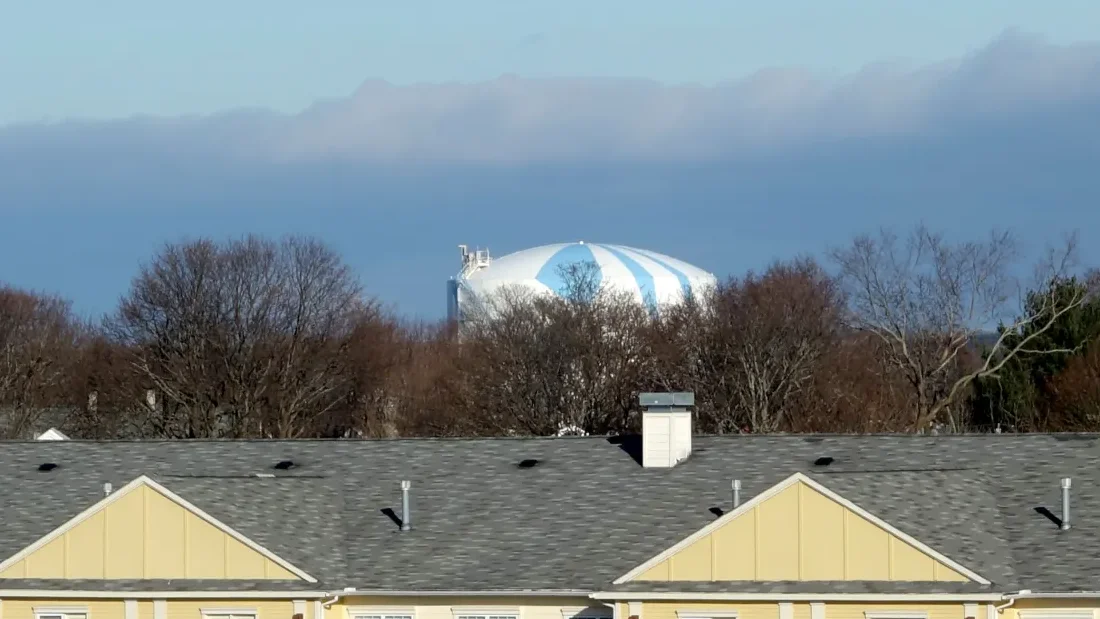
LEGISLATION: Massachusetts lawmakers consider a climate bill that aims to slow the expansion of natural gas and authorizes gas utilities to offer networked geothermal services. (Energy News Network)
ALSO: The bill would also streamline the process of siting and permitting for renewable energy infrastructure, boost deployment of electric vehicle chargers, and support increased energy storage. (WBUR)
SOLAR: Maine officials plan new fees for large-scale solar installations on certain undeveloped land — measures that developers say could make utility-scale solar projects all but impossible. (The Maine Monitor)
GAS: A Pennsylvania community looks to increase the allowable distance between fracking operations and homes, with advocates citing adverse health effects associated with these sites. (Pittsburgh Post-Gazette)
NUCLEAR: Federal regulators reject a request to let Amazon Web Services expand a data center co-located with a Pennsylvania nuclear plant, saying the increased energy use could cause reliability concerns. (RTO Insider, subscription)
GRID: A Maryland utility plans to use a $50 million federal grant to install 11 MW of battery storage capacity and enable additional solar, storage, and electric vehicle charging projects. (Baltimore Sun, subscription)
EFFICIENCY: Rebates for heat pumps, induction stoves, and other energy efficiency measures are expected to be available in New Hampshire by summer 2025, after delays in receiving $70 million in federal funding for the program. (NHPR)
TECHNOLOGY: A Massachusetts start-up promises a clean and affordable way to extract lithium — an essential metal for making electric car batteries — from underground brine. (The Boston Globe)
WIND: The rules governing transportation of wind turbine parts in New York pose a serious obstacle to reaching the state’s goals for onshore wind production, advocates and industry insiders say. (Gothamist)
MICROGRIDS: A New York City utility tests a microgrid combining solar panels, an onsite battery, and electric school buses that can send power to the grid during off hours. (Canary Media)
ELECTRIC VEHICLES: Delaware plans to use $21 million in state and federal funds to install electric vehicle chargers along busy highway corridors. (Delaware Business Times)
POLITICS: Maine’s plans to develop an offshore wind hub are a central issue in a state legislative race that could signal the area’s level of support for the industry. (Bangor Daily News, subscription)